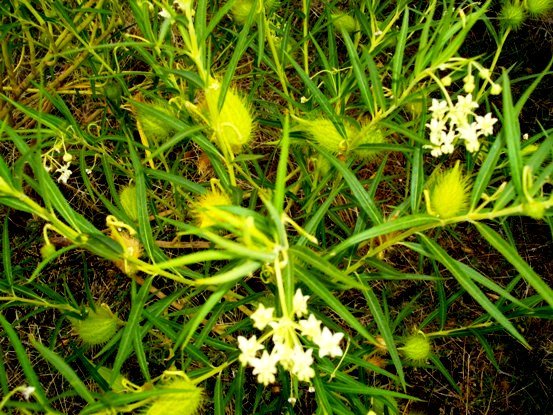Gomphocarpus fruticosus

Gomphocarpus fruticosus, the vleiklapper (marsh clapper) in Afrikaans, grows throughout South Africa, barring the KwaZulu-Natal coast and some inland parts of the Northern Cape. The plant is a slender shrub of about 1 m, occasionally as tall as 3 m.
The opposite leaves are lance-shaped to narrowly oblong, almost linear and tapering to their tips and bases. Their pale midribs are conspicuous. Leaves vary much in size, little in shape. They become about 7 cm long, 1 cm wide. Leaves and stems exude a milky sap when broken.
G. fruticosus used to be called Asclepias fruticosus. See also the Plant Record under that name on this Site (Manning, 2009).

